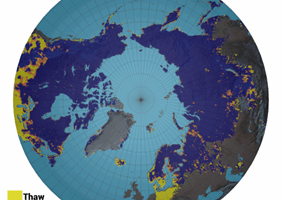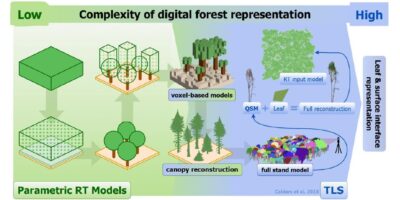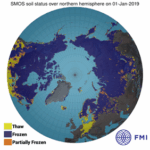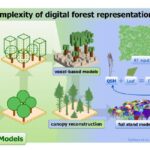The Academy of Finland funded WINMET project studies the role of snowpack and soil freezing in controlling the winter season methane emissions from wetlands. Methane emissions from natural wetlands account for around 30% of total CH4 emissions and are the most important source of uncertainty in the total methane budget.
About one third of northern peatlands are in zones of continuous permafrost, and the rest are mainly on periodically freezing soils. The thawing/freezing process has a strong seasonality, and it is not instantaneous; rather, the length of the freezing period can extend to several weeks or months with significant on-going methane emissions. Snowpack changes the soil freeze/thaw dynamics by forming an insulating layer on top of the soil and slows down the diffusion of methane from soils.
During the past decades, arctic and subarctic areas have seen increases of mean air temperatures well above the globally documented average, resulting in changes of extent, duration and mass of seasonal snow cover and timing of snow melt period. Changes in the snow cover and soil freeze/thaw periods have both direct and indirect impacts on greenhouse gas emissions and have potentially a significant positive feedback on climate warming.
During the next four years, the WINMET project observes snow conditions and methane fluxes from a wetland area in the Finnish Meteorological Institute’s Arctic Space Centre in Sodankylä. Ecosystem-scale methane fluxes are measured using eddy covariance technique and atmospheric methane is monitored with a drone-based AirCore sampling system. In addition to manual and automated observations of snow properties, snow conditions and soil freezing are monitored using microwave radiometers. They provide continuous observations of microwave signatures at the same frequencies that are used in satellite-based monitoring. All these measurements allow the modeling of wetland greenhouse gas and water balances, studying the wintertime methane emissions from the wetlands, and development of wetland-specific algorithms for satellite monitoring.
More information:
Tuula Aalto, WINMET project PI, tuula.aalto@fmi.fi
Anna Kontu, Sodankylä Research Infrastructure PI, anna.kontu@fmi.fi








Leave a Reply
You must be logged in to post a comment.